Final Fantasy VII Rebirth Review
The More Things Change
Fans of Final Fantasy VII remember their first trip to Midgar. Whether it was in 1997 with the original game on the PlayStation, more than two decades later with the release of Final Fantasy VII Remake for PlayStation 4 in 2020, or somewhere in-between, the bustling metropolis where the game’s first act occurs looms large in the minds of many gamers. Midgar had it all, a thriving company town perched above slums, literally blocking the sunlight from reaching the citizens below. It’s where millions of players over the decades met Cloud on his first mission with Avalanche; his reunion with Tifa; and the group’s daring rescue of Aerith from the Shinra HQ, culminating in a pulse-racing escape from Midgar.
During the first dozen or so hours of the original game, there is no sense of a world outside of Midgar, because it is seemingly the world itself. It is such a dizzying surprise then, upon leaving Midgar, when the screen fades to black and then reveals the world map. On it, the overwhelming cityscape is revealed to be nothing more but another tiny dot in a world full of them. It is only here, during this indelible moment, where the game reveals its true scope to the player. Due to its narrative structure, this moment never arrives in Remake. Instead, this exquisite sequence serves as the launching point, mission statement, and thesis of Final Fantasy VII Rebirth. Joyous, moving, and captivating, Rebirth delivers an experience that captures the essence and rivals the grandeur of the original.
The story picks up after the end of Remake, with the party arriving in Kalm, a village just outside of Midgar. Upon their arrival, a flashback to Nibelheim five years prior occurs, where Cloud visits his hometown alongside Sephiroth to visit the Mt. Nibel reactor. At the conclusion of this visit, Cloud returns to Nibelheim as Sephiroth’s mental health continues to unravel, leading up to the recreation of some of the original game’s most iconic imagery and an explosive finish to the game’s opener, matching the firepower of Remake‘s opening mission.
From here, Rebirth carries players through familiar locales and moments, lovingly recreated and expanded upon. The story beats are largely familiar to anyone who has played through the original: Cloud and company are following a group of robed men who are apparently drawn towards Sephiroth. Yet there are enough deviations from the original title so as to provide significant motivation to push through the narrative to see what has changed, or more importantly, find out why. The story comes to life during the smaller character moments, such as Cloud chatting with Tifa or Aerith during a sidequest, as well as the portions dedicated to the backstories of characters like Barrett and Red XIII.
The story is evenly paced, with some chapters providing ample time for exploration and the like while others set the stage for elaborate set pieces. There is always motivation to move the story forward, even when exploring the game’s handful of open zones. Even then, while it may not feel like the plot is being advanced while running between towers or lifestream springs, the party banter constantly changes and provides additional characterization to some wonderfully fleshed-out characters.
Even characters like Yuffie and Vincent, wholly optional in the original game, are so seamlessly integrated into the story that it becomes hard to imagine going without them. This is especially true for Yuffie, who joins the party relatively early in Rebirth and becomes an integral part of the proceedings thereafter. This entire game takes place during a bit of a narrative lull in the overarching story, but Rebirth is all about the unknown journey and the small character moments peppered throughout, rather than the destination. The game’s finale packs a weighty emotional punch and satisfying conclusion that is sure to be debated in the years leading up to the final chapter. The climax of Rebirth feels earned and hints at the developer’s intentions for the remake project at large. The changes or expansions to the story feel natural, with the additional emphasis on character and world-building deeply enrich the experience.
The excellent combat systems from Remake have returned and naturally been refined, continuing the series’ evolution of Active Time Battle into real-time action. Each playable party member — up to seven, from the four in Remake — has their own weapon and fighting style. The square button launches regular combos while the triangle button offers a unique, character-specific function. These actions are available to use freely but also fill each character’s segmented ATB gauge. When one of the sections is filled, players can give orders to use abilities, magic, items, and new Synergy abilities.
Each character can be augmented by equipping Materia, which allows the use of specific magic or abilities, or offers other effects or buffs. The number of available slots depends on the type of weapon or armor equipped. Most or all of the magical orbs from Remake returns, with additional wrinkles like Materia earrings, an accessory which provides the wearer with the appropriate ability, skill, or stat boost. It’s a great addition that frees up Materia slots and widens combat strategy, similar to the MP-less elemental attacks that each party member is able to learn. There’s an odd dissonance in obtaining and leveling up Materia (and in some cases, weapon abilities) already learned in Remake, but it doesn’t detract from the overall experience and embraces the idea of the trilogy serving as three separate and complete games.
The Active and Classic battle modes return, giving players a choice in whether they want to get actively involved with regular actions and dodging. Rebirth introduces a new Dynamic difficulty setting, where enemy strength changes based on party level. It serves as a halfway point between the Normal combat difficulty and the more unforgiving Hard mode that unlocks when finishing the story. Here the enemies appear to grow stronger with the party, providing more challenge even in ordinary combat. It’s a nice touch especially for those who find Hard mode to live up to its name too earnestly.
If the party is able to initiate combat first by pressing the square button at the first indication of an imminent threat, a First Strike bonus is granted. Each character has their own Folio, where skill points can be spent to unlock latent powers or abilities, stat boots, and the new Synergy attacks, which are team attacks between two party members that reflect their relationship and actually deepen it. These abilities boast some excellent combat animations but also inflict significant damage as well as extend staggers, charge Limit Breaks, and other benefits. Moreover, use of these abilities can impact Cloud’s relationship with each party member, which can affect the outcome of some memorable events. The weapon levels and skills system have been streamlined with auto-upgrade settings as well.
The result is another improvement on the solid mechanics introduced in Remake. It’s the same basic combat system, but it somehow feels lighter and sharper. The characters practically dance across the screen during battle. Even the party members who aren’t active in combat are seen on the sidelines, feeling involved in the fray. Between that visual treat and the Synergy attacks, it really does feel like the whole gang is almost here. It’s remarkable that combat interactions can impact the relationship between characters outside of battle, a design choice that seems to make perfect sense in a game full of them. Rebirth doesn’t blink at adding more of what was appreciated in Remake, and then some.
Players will encounter a familiar friendly face from Remake when Chadley appears to once again offer his services. Chadley has beefed up his services since leaving Midgar, offering a host of things for players to do in the Grasslands and other open zones in the form of completing World Intel by taking on monster hunts, uncovering treasure at Lifestream springs, unlocking the powers of the summons by solving simple memory puzzles, and much more. However, these exploration-based objectives are completely optional for those who would prefer to get on with the story.
Certainly, the open zone exploration segments are nothing we haven’t seen before and may irritate some gamers as the game continues, but it is the way the game handles this aspect that makes it worthwhile rather than busywork. It provides extrinsic rewards — points for new Materia, raw items for crafting, valuable quest rewards, etc — but also offers intrinsic value through meaningful conversation, enhancing relationships, and simply the pleasure of spending this time with these beloved characters who have lived in our minds for twenty minutes or twenty years. The tangible rewards coupled with the additional world-building snippets from Chadley make them absolutely worthwhile for player utility and enjoyment. Likewise, the optional quests spread across each region feel meaningful, contributing to a developing sense of what this world is really like, with bits of tertiary storytelling acting as connective tissue to further establish the setting.
While Cloud could run through the environments in Remake, he is able to do much more in Rebirth, like vault over obstacles, by simply holding down the run button. Cloud is given ample opportunity to scale cliffs, slide down poles, and swim through much of the environs. Areas that would have served as a barrier in the earlier game are simply a minor inconvenience for Cloud here, giving way to hidden treasure chests and other rewards often hiding in plain sight. During specific sequences later on, other characters are given opportunities to interact by throwing, shooting, or even using a grappling gun to get around.
Nothing compares, however, to the glory of the Chocobo. Each region has their own color-specific Chocobo with its own unique abilities: a Black Chocobo can scale specific walls, while the Green variant can launch into the air at specific points. These colorful birds make traveling through the open zones a joyful endeavor and provide both a nostalgic hit and incredible utility in terms of exploration. Similarly, expect to see other iconic modes of transportation return here: we’ve got a dune buggy, airplane, and even personal scooters in Costa del Sol.
Where the original title was no stranger to compelling mini-games, Rebirth kicked them into overdrive. In Kalm, Cloud is introduced to item creation and an incredibly addictive card game known as Queen’s Blood. After building a deck, Cloud can challenge other players the world over. There are plenty of cards to collect and challengers to compete against. The game is simply too good to be left alone.
Outside of Queen’s Blood, there is so much, in fact almost too much, to do in terms of mini-games. There is piano playing, box smashing, and even Moogle chasing. All of this is before arriving at the Gold Saucer, which also boasts a 3D Battler, a motorcycle chase, Chocobo races, and much more. There are even quest-specific minigames that are used a single time. All of the games are competently designed, but individual mileage will certainly vary. That feels like it’s by design; the game expects players to engage with each mini-game once or twice, but certainly doesn’t require much more unless you are hunting for specific items.
From the opening moments, Rebirth enjoys showing off its flourish and polish while revisiting and expanding more iconic moments from Final Fantasy VII. The stunning graphical style of Remake has been upgraded as well, demonstrating the PlayStation 5’s power, even with the occasional graphical stutter or fuzzy pixel. While Remake peddled in industrial-themed hues and closed spaces, Rebirth revels in the opposite. The group emerges from Kalm into the Grasslands, a bright, beautiful, and truly massive area teeming with monsters, treasure locations, and more. Each zone has a distinct feel — the Corel region is a craggy desert while Gongaga is green and lively — that contributes to the sense that this is an expansive and vibrant world waiting to be explored. Rebirth is visually sumptuous, providing a frequently changing backdrop for the party’s adventures and travails.
Likewise each city or hub is thoughtfully redesigned. Kalm is a beautiful, bustling town, well-populated with non-player characters, vendors, and the like. It is easy to see facets of the original Junon City, Cosmo Canyon, and even Nibelheim peeking through the new facades. Seeing their modern reinterpretations is a unique delight, as it somehow looks exactly like you remember it, yet completely novel at the same time.
The cutscenes and character models are simply beautiful, complemented with excellent visual and audio direction. Many scenes are heartfelt and dramatic, with the relationships between characters feeling earnest and real. So many classic moments from the original, such as Barrett’s conflict with Dyne and Tifa’s reluctance to fully trust Cloud, feel earned and authentic and boast a cinematic quality that draws the player further into the world.
The returning voice cast continues to do excellent work, with exceptional performances from Britt Baron as Tifa and Briana White as Aerith. These two in particular breathe so much nuance into these characters. It’s easy to reduce Aerith and Tifa to archetypes, yet the performances here reveal the complex personalities for both women. It’s such a pleasure to watch Aerith assert herself with confidence and be playfully sarcastic. Likewise, hearing the quiet desperation in Tifa’s voice or her struggle against her need to please other people help humanize and make her more relatable. It’s a testament to the performances and casting that every party member fits their role so naturally, and it’s hard to imagine someone else embodying them by the time credits roll. There does appear to be some audio mixing issues in some cutscenes, making it difficult to hear some of the dialogue. It’s a small issue that will hopefully be remedied with an early patch.
The production values are rounded off with another set of dazzling music, boasting great iterations of classic tracks. The arrangements of classic themes from Cosmo Canyon, Gold Saucer, and the like are stylish reinterpretations of iconic tracks that add an extra layer of depth to the presentation. The music team has done a stellar job squeezing everything it can from the original soundtrack and providing new interpretations for players to experience.
Final Fantasy VII Rebirth understands and embodies what made the original game great. The exquisite attention to detail paid by the artists, developers, and designers of the game’s combat, musical stylings, and plentiful mini-games becomes apparent. Perhaps more than that, though, is the joy and love felt for these characters and the world they inhabit. The unforgettable memories from the original game are painstakingly reimagined and recreated here, grabbing at your heartstrings and refusing to let go.
It’s been twenty-seven years since Cloud, Aerith, and Tifa first left Midgar. Since then, their world — and ours — has changed significantly. It’s such a wonder, then, to be able to recreate that sublime experience of leaving Midgar for the first time during the opening of Final Fantasy VII Rebirth. This is the game that delivers on the promise of the Final Fantasy VII remake project. It’s a fascinatingly familiar yet unknown journey that is breathtaking and unforgettable.
Disclosure: This review is based on a free copy of the game provided by the publisher.
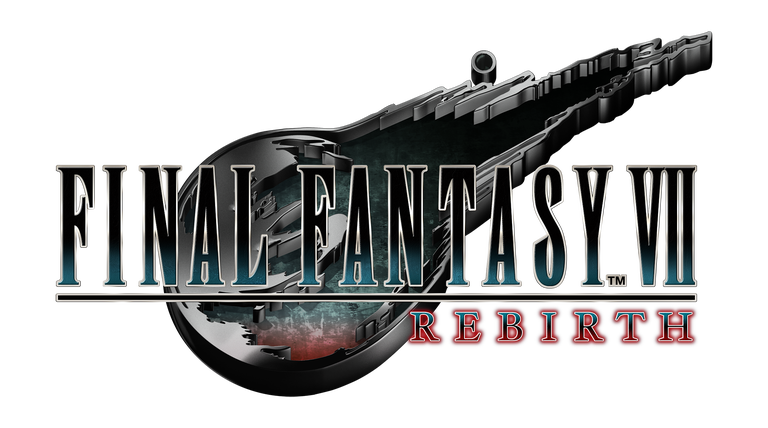

More mini-games than Mario Party
Gorgeous music and graphics
Queen’s Blood is the best
Dynamic and intuitive combat
Engrossing, emotional storyline
World Intel missions can start to grate
Dialogue is poorly mixed in some scenes

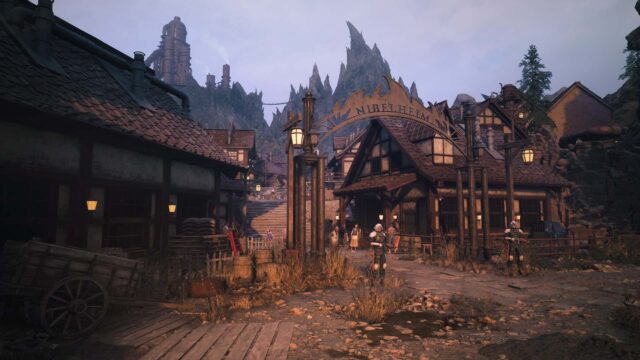
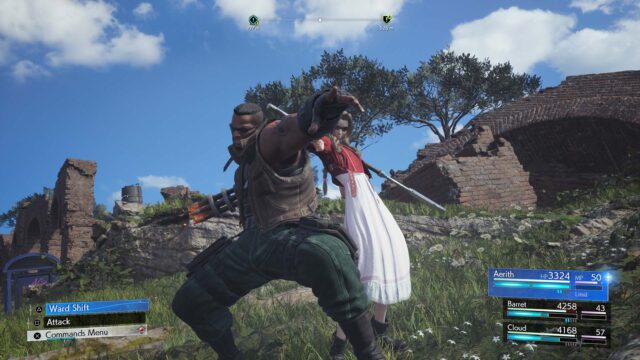
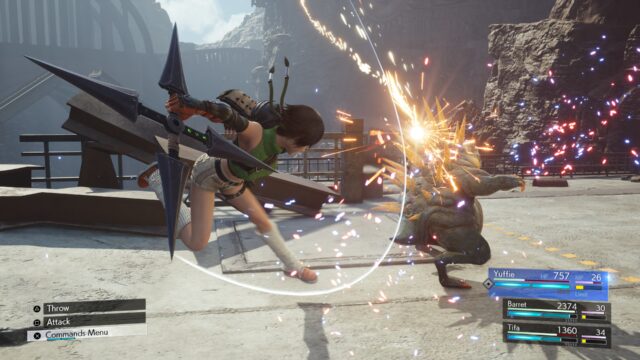
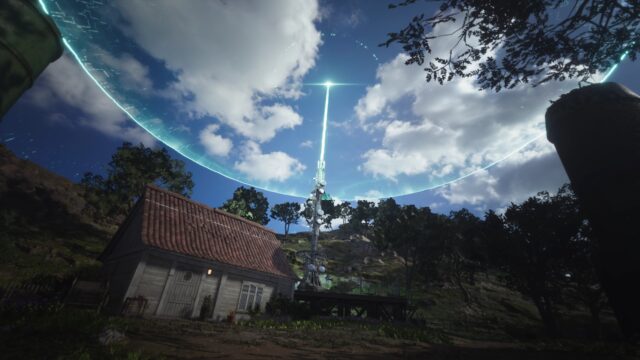
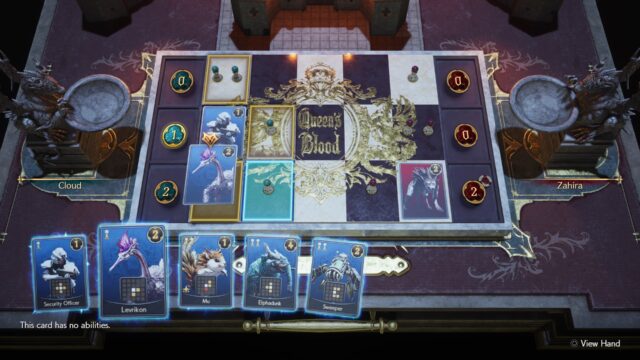
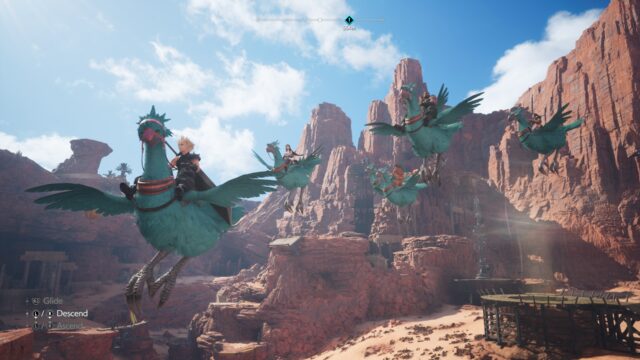


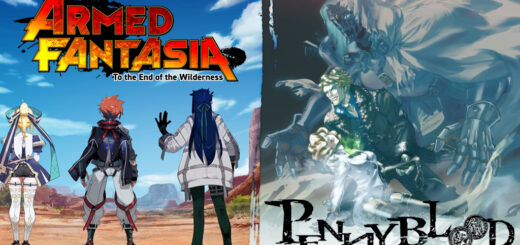
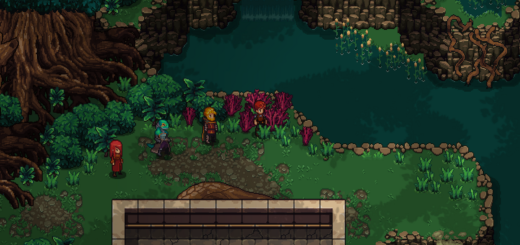



Recent Comments